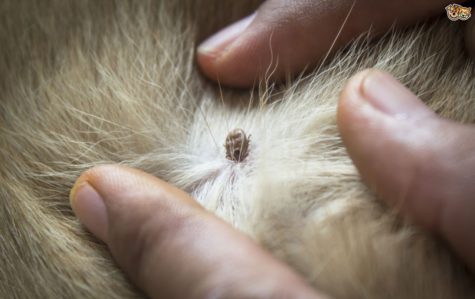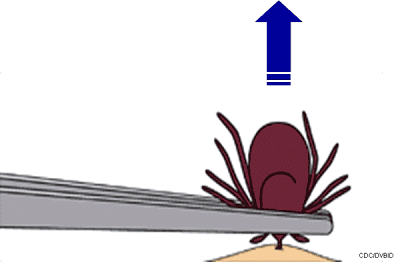Finding And Removing Ticks
The best way to find ticks on your pet is to run your hands over the whole body. Check for ticks every time your pet comes back from an area you know is inhabited by ticks. Ticks attach most frequently around the pet’s head, ears, neck, and feet, but are by no means restricted to those areas.
If you find an embedded tick, do not simply grab its body and pull, as the tick’s barbed hypostome (feeding tube) may break off and remain in the bite. Applying chemicals or flame to the tick is not a good idea because, while it may make the tick let go, it can also cause the tick to spit blood back into the wound, possibly sending disease germs into the bloodstream in the process.
The best way to remove a tick is to use rubbing alcohol and a pair of hemostats or sharp tweezers. Dab rubbing alcohol on the tick, and then use the hemostats or tweezers to take hold of the tick as close to the dog’s skin as you can; pull slowly and steadily. Try to grab it where its mouth-parts enter the skin and pull gently without letting go. It will eventually releases its hold by withdrawing its barbed mouth-part from the skin.
Try not to leave the tick’s head embedded in the dog’s skin. Do not apply hot matches, petroleum jelly, turpentine, nail polish, or just rubbing alcohol alone because these methods do not remove the ticks and they are not safe for your pet.
Once you have removed a tick, do not try to crush it – unengorged ticks are flat and very hard to crush, while engorged ticks will burst and release blood. Instead, you should flush the tick down a drain or seal it in a jar. (It can be useful to keep the tick to show to a doctor in case you or your pet gets sick from the bite.) Some people kill and preserve ticks by dropping them into bottles of rubbing alcohol; if you do this, do not use the alcohol in that bottle for anything else.
After you pull a tick off, there will be a local area of inflammation that could look red, crusty, or scabby. The tick’s attachment causes irritation. The site can get infected; if the pet is scratching at it, it is more apt to get infected. A mild antibiotic, such as over-the-counter triple antibiotic ointment can help, but usually is not necessary. The inflammation should go down within a week. If it stays crusty and inflamed longer than a week, it might have become infected.
Although ticks can transmit diseases, they are usually nothing more than a nuisance. The best approach is to prevent them from embedding, and once embedded, to remove them quickly. As long as you stay on top of the situation, your pets should cruise right through the tick season with no problems.
sources: Veterinary Partner and Regional Pest Management
- Dog Training School Pics by shirleytwofeathers - 1 Comment
- Some Cute Dog Quotes by shirleytwofeathers - No Comment
- Training Do’s and Don’ts by shirleytwofeathers - No Comment
- Holiday Toxins and Dangers by shirleytwofeathers - No Comment
- Four Good Reasons To Train Your Dog by shirleytwofeathers - No Comment
John kleist: Dog Training School Pics





Leave a Reply